The F-35 Joint Program Office and Lockheed Martin have completed F-35 static, drop test, and durability testing and early results indicate a potential for an increased service life certification for the F-35A variant.
The company say that rigorous testing supports validation of the air frame’s strength and resilience to perform in the demanding environments it will experience throughout its operational lifetime and the final results will support fleet management and maintenance forecasting for decades of operations.
“The transformational F-35 pushes the boundaries of engineering and physics with supersonic speed, agility, high attitude and angle of attack, weapons capacity, vertical landings, carrier operations and much more,” said Greg Ulmer, Lockheed Martin’s vice president and general manager of the F-35 programme.
“Durability testing gives the men and women who fly the F-35 great confidence in the aircraft’s performance today and for decades to come.”
Ground testing includes a full scale durability airframe of all three variants, which were loaded in unique test rigs and laboratories to simulate ground and flight load conditions during fleet operations.
The F-35 service lifetime is 8,000 hours, and each test airframe is required to complete two life-times of testing, or 16,000 hours. The F-35A vastly exceeded the requirement by completing three full life times of testing, or a simulated 24,000 hours, which gives the programme confidence in a potential service-life increase.
“We look forward to analysing the results and bringing forward the data to potentially extend the aircraft’s lifetime certification even further,” said Ulmer.
“Already certified for one of the longest lifetimes of any fighter, an increase would greatly reduce future costs for all F-35 customers over several decades to come.”
The F-35A airframe completed its testing at BAE Systems in Brough in the UK and the F-35B and C variants were tested at Lockheed Martin in Fort Worth, Texas. All variants undergo final tear-down inspections at the National Institute for Aviation Research in Wichita, US.


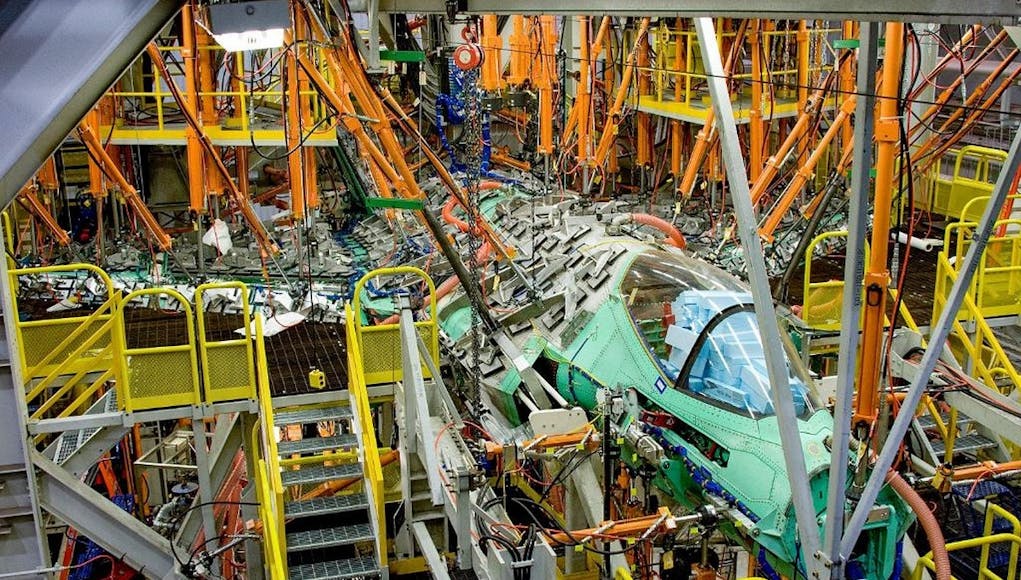
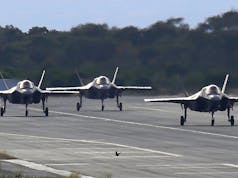
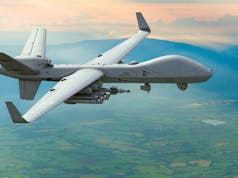
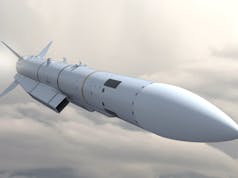

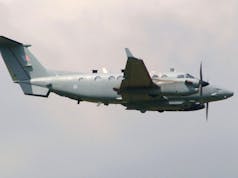

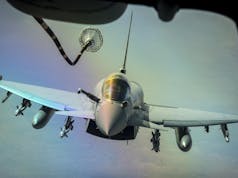




Please, please let the F-35B results also be good. We could do with some unexpected cost optimisations. Presumably in practice, if the F-35B results are similar, it would mean that some of the 138 over-the-total-lifetime-of-the-project aircraft planned for the UK could end up as extra frontline aircraft rather than being replacement purchases for worn-out older aircraft. Might that eke out another frontline squadron from the 138 total? The fear of course is that it could just as easily end up with HMG cutting the total buy on the basis that they could still form the same number of squadrons.
In any event, hopefully they’re not talking about F-35B data yet because the testing and analysis is further down the queue than the F-35A rather than it being because the F-35B results weren’t anything to shout about.
Morning Julian.
I cannot see us ordering more than an additional 48. Which gives 96 and enough to surge a Carrier and have a reduced number on the second.
Surging two Carriers with 36 F35 as some suggest I don’t think has ever been the plan.
Reducing the F35 order is an easy save for MoD.
And if British industry is building 15% of every aircraft built they are not losing much in not building parts of the 40 odd not ordered out of thousands.
(Chris H) Daniele – I am coming to that point of view as well. Not because I think the F-35B will not deliver as it will be a major asset for carrier strike and RAF roles for the next 20+ years but because by 2040 we will need a Typhoon replacement, we will be building ‘Tempest’ and this will negate the need for those extra 40 and will be better use of that £0.4 Bn or so.
I believe there are also other future drivers here: The QE, being first of class, will be in for an earlier major refit @ 20 years in 2035. She could then be fitted out for CATOBAR (but keeping her ramp) using the British Converteam EMCATS fitted for a Naval Tempest and an EMKIT for a UAV. The timescales are so close its more than coincidence. In 2009 EMCATS was delivering a bigger payload more reliably than was EMALS. Converteam have proved themselves in many ‘electric drive’ ships now and I think we should keep investing in our own UK based businesses. Even given GE from the USA now owns Converteam.
Morning Chris.
A Naval Tempest?
That would be a fine thing indeed. Given HMG ability to bodge things rather than believing in ourselves with our own products over countless decades I will be happily amazed if that materialises!
I’d have thought a navalised UAV more likely.
I think the billions saved from reducing the F35 buy would be swallowed up reducing some of the deficit the MoD finds itself in in what it is committed to buy over the next decade to what money it thinks it will have ( thus the reason for the spun “MDP” ) which as usual will be nothing more than a cuts exercise dressed up differently.
The F35, QEC and any new orders will no doubt form a major chunk of the Carrot dangled to the world while the foundations are removed elsewhere with far less fanfare…
I have no knowledge at all on this EMCATS and EMKIT so I read your and others comments on that technology with interest.
F35B costs: 40x £100 million each = £4 billion not £0.4 billion.
£4 billion sounds a lot of money but actually for a country that gives £15 billion a year away on foreign aid is small change. What I am trying to say is we can easily afford 48 more F35Bs at least.
You fight wars with weapons we have to hand. Not what you might get in the future, possibly, potentially. Look what happened to type 45 destroyer programme reduced to 6 hulls to doped up and advance the type 26 programme. The type 26 programme delayed, over budget and reduced to 8 ships to allow for type 31 programme. Knock on and knock on resulted in reduced capacity. Let’s just get the armed forces equipped and armed correctly now and develop future weapon systems concurrently with and not at the expense of our current weapon systems. Cheers
(Chris H) Mr Bell – fair point on my maths …
But I was not suggesting anything about what we fight a war with now, next year or in the next 20 years. I was looking ahead to 20135 and beyond when three major programmes come to a convenient hiatus. As Daniele suggests we really need to question buying F-35 beyond 96 anyway and I believe, given a) the speed of technology and aerospace advances, b) where QE will be in her life cycle and c) where Tempest let alone UAVs will be in 2035, that I agree with that idea.
You give excellent examples of past failed thinking at the MoD but given the announcements on spaceports, satellite manufacturing and Tempest there does seem to be more ‘joined up thinking’ now and I see a Government looking very positively at where UK Ltd will be post Brexit.
Julian- yes I’m afraid id agree with your second point,if F35 life could be extended HMG would see that as an opportunity to reduce the overall buy,being the pragmatist that I am.But as Daniele says another 48 would be just about sufficient to sustain operations for the two Carriers,in an ideal world id like to see the shortfall made up of another batch of Typhoons but I wouldn’t be confident of that happening either.
I found this link Julian which covers the testing of the F35B. Not sure if the source meets with everyone’s approval.
http://www.thedrive.com/the-war-zone/21547/the-marines-are-still-trying-to-figure-out-when-its-f-35bs-might-literally-fall-apart
(Chris H) Nigel – Interesting that in the whole of the article no mention was made of the fact that the two F-35s (and A and a C) that had been stress tested to 3 times their expected service life of 8,000 hours were shipped toi that facility from here in the UK. Something that couldn’t actually be done in the USA as w have some of the most advanced airframe testing rigs and engineers in the world. This from 2009:
https://www.theengineer.co.uk/issues/april-2009-online/fighter-stress-test/
And correct me if I am wrong but doesn’t your link article say that the F-35B testing was halted after its SECOND full lifetime (presumably @ 16,000 hours) to procure a later production variant? So basically the F-35B is perfectly safe for its expected 8,000 hour life?
In reply to,
“Please, please let the F-35B results also be good. We could do with some unexpected cost optimisations. Presumably in practice, if the F-35B results are similar, it would mean that some of the 138 over-the-total-lifetime-of-the-project aircraft planned for the UK could end up as extra frontline aircraft rather than being replacement purchases for worn-out older aircraft.”
Not quite sure what exactly you’re getting at Chris?
It’s not my article, and the testing on the F35B is still incomplete.
What’s important to note are the costs involved to get the F35 up to Block 4 and the expected lifecycle of the B variant compared to the A & C.
And just to repeat myself,
Janes Defence
March 2018
“The Pentagon is facing a major potential F-35 Block 4/C2D2 cost increase, This could add between USD6.9 billion and USD12.5 billion more to the Pentagon’s most expensive platform.
The Pentagon is facing a cost increase for what was known as Block 4 modernisation of the Lockheed Martin F-35 Lightning II Joint Strike Fighter (JSF) ranging between USD6.9 billion and USD12.5 billion, according to a key lawmaker and a Defense Department official.
Subcommittee Ranking Member Niki Tsongas of Massachusetts said the total cost for C2D2 could reach USD16.4 billion through FY 2024”
And somebody has to pay for it, including us!
https://www.janes.com/article/78443/pentagon-faces-major-cost-increase-on-f-35-block-4-modernisation.”
(Chris H) Nigel – You quoted Julian not myself so I can’t comment further on that.
However in my reply I was referring to the article to which you provided a link. All American bullcrap and not a mention of the key important facts that these very prescriptive, lengthy and accurate tests were carried out by BAE and a University here in the UK. Despite that inaccuracy I went along with it and used it to quote against your comment inferring the F-35B is flawed structurally. It isn’t as even a very early pre-production airframe was tested to exceed 2 x life cycles @ 16,000 hours.
To say ‘ah but testing isn’t complete’ does not negate the findings of testing already done. So even if another airframe does fail at say 22,000 hours that is still way beyond any likely service life of any F-35B aircraft.
Its sad that you persist in finding any little piece of so called ‘evidence’ to further your agenda.
(Chris H) Nigel – Quote:
“And just to repeat myself”
No don’t. Please stop. Once again you are peddling irrelevant stuff because you have an agenda. We all understand that but keep to the topic? This is about structural testing not some distant software upgrade.
You even tried to deflect the conversation in your odd reply to my post about structural testing.
Interesting to note you find the testing and subsequent reports by the DOT&E JPO and the Pentagon bullcrap Chris?
As for the predicted costing on block 4 to give the F35 its full capabilities? I much prefer pointing out both sides of the coin, before we get drawn in any further with our limitless defense budget!
(Chris H) Nigel – nice deflection (again) but no I was calling bullcrap on the article to which you gave a link – ie “The Drive / The Warzone”. While the JPO was quoted later in the article it was not an article published BY the JPO. There is a difference.
And there you go again Nigel. You just cannot keep to the point and have to throw in other totally unrelated matters.
I do not see a long life for our naval F35B if it goes up against any Russian made 4th generation (or better) interceptors. I read a semi reliable US article saying that even the F22 should not be used against such opposition and that the US would use its own 4th gen fighters. F22 (like F35B) has a limited weapons load out if it wants to be stealthy.
Sorry Colin, but I must disagree. The F22 for example was primarily designed as an air dominance fighter that could super cruise (maintain supersonic speeds without using reheat) and make sustained turns whilst supersonic. This gives increased energy (range) to Air to Air missiles (AAM), but also enables the aircraft to minimize the time it is in the return fire zone. Because of the superior thrust to weight performance over say an F18 along with the vectoring exhaust nozzles still enables the aircraft to mix it with 4th gen aircraft.
The aircraft employs different tactics to earlier 4th gen aircraft, much like the Typhoon. Zoom in, fire, then zoom out. The difference being the F22 uses stealth to hide itself and uses a low probability of Intercept radar to search for and designate targets. However, admittedly the aircraft does suffer from a limited internal weapons load. This has been mitigated by pairing up the F22 with other aircraft. A very good example of this is during the recent trials with the Typhoon. The Typhoon was kitted out with Meteor test missiles and flew some distance behind the F22. The F22 acted as the scout, searching and designating targets for the Typhoon. The trial was very successful, especially as both aircraft were able to super cruise giving the pair a distinct advantage against their opponents. So basically, the pair could designate targets a long time before their opponents were even close enough to return fire. This is why the USAF are now pairing up F22s and F15s, with the F15 pretty much relegated to be a bomb truck for the F22, they’re still keeping AMRAAM though!
The RAF will and have done something similar. The Sentry with its very long-range search radar can designate targets to Typhoons via Link16. The Typhoon remains completely passive during the engagement only feeding the missiles (AMRAAMS) course updates, once the missile gets within range, its radar goes active and tracks the target. With Meteor there may be a case where the Sentry can give course updates allowing the Typhoon to return to base to re-arm. The F35 when it becomes fully operational will perform a similar function as the F22 as a scout for the Typhoons.
In RN service I’m certain that a Crowsnest fitted Merlin will perform as per the Sentry searching and designating targets for its F35s. Furthermore, I would expect a lone F35 acting as a long-distance scout searching and designating targets for waiting F35s or the T45’s Aster.
The F35 in RN/RAF service will be armed with both Meteor and ASRAAM AAM. The Meteor has a phenomenal range as does the ASRAAM. The ASRAAM is designed to engage targets at just beyond visual range, to give the aircraft an advantage over conventional IR AAM, i.e. shoot first, then get away before your opponent can return fire. The F35 is fitted with the APG-81 AESA radar. This is not only a multi-mode radar but also low probability of intercept. This means its very difficult to detect, so even when being used actively will give a distinct advantage over your adversary. This is backed up with its next generation IR search and track system. The Typhoon’s Pirate IRST is believed to be a standard which others are compared with. It has very long range search and can detect small stealthy targets very well, the system fitted to the F35 is supposedly better giving a full hemispherical coverage, allowing the pilot to see through and around the aircraft. It will detect 4th gen aircraft at a much greater range than the F35s heat signature can be detected.
As for the F35s aerial performance I wouldn’t worry too much. At this year’s RIAT the F35A gave a very good demonstration of its prowess on par with the F18 at least. Also, food for thought regarding dog-fighting, a RAAF F18C equipped with an ASRAAM successfully engaged a target directly behind the aircraft; literally the missile flew forwards off the launch rail, then did a 180 degree turn to engage the following target. This is a massive step change in capability and something both the F35 and Typhoon will be able to do.
Like button required.
I am not sure whether Tempest should be built as STOVL only. I think technology may well over take the idea of a combat aeroplane before it leaves the CAD screen. If the F35x does have greater shelf it is a good thing then.
This is indeed great news – but I really dont agree with or see the need for reducing our order of F35’s from the 138 we have committed to. I would suggest we accelerate the puchase in fact and get an operational fleet of 128 or 8 good squadrons, with a minimum of 96 for the 2 carriers.
In reality Tempest is a long way away and whilst I like it, I would really support us going all in on Taranis / Magma as this fills a need that every country in Europe has – something that is relatively inexpensive, is stealthy, has good utility and strike capabilities and can be operated remotely or as part of an F35 led deep strike group.
I also dont want us to get a reputation for bailing on projects once we get our work share, as this winds us all up with our European partners – I think the same would occur with our US cousins.
Taranis is real, its innovative and we are leader in the field, why cant we just press on with our advantage instead of giving it all away – same will happen with Tempest. The export potential for Taranis /Magma is massive – really is and we should be targeting a price of £20m per unit with a minimum order of 10 units.
Really happy to be wrong on this – but history says otherwise